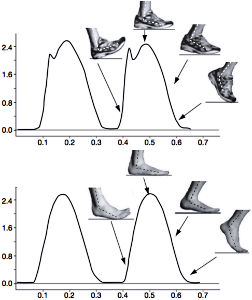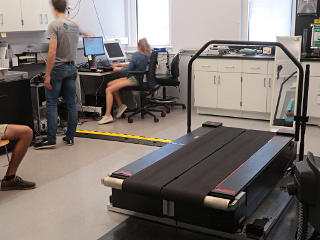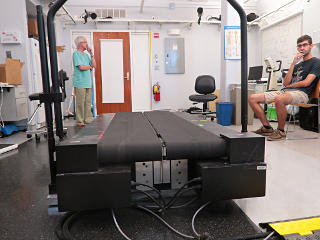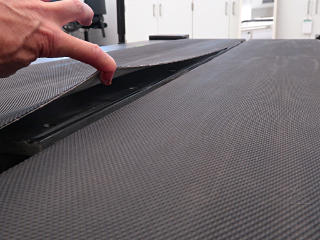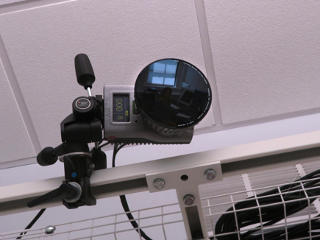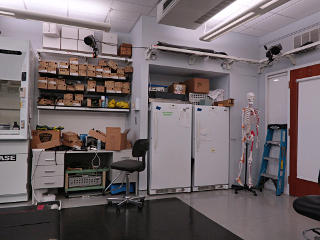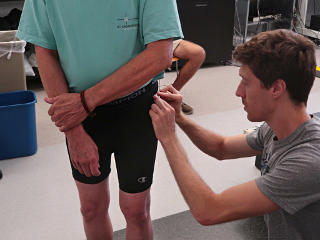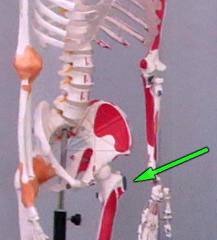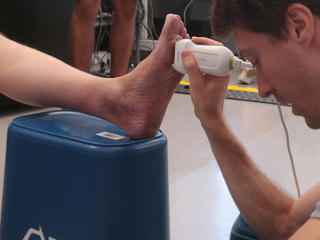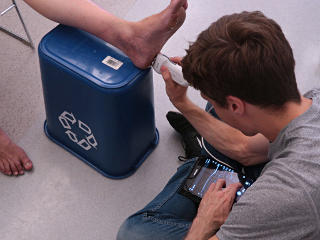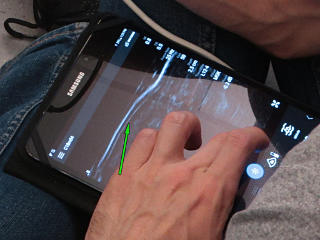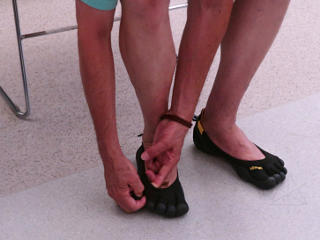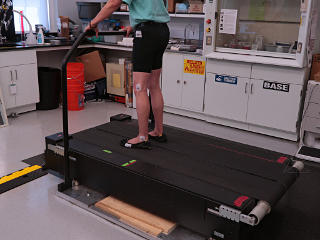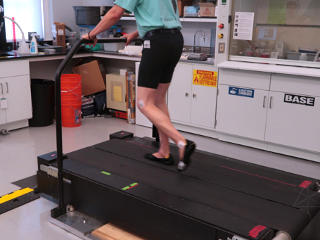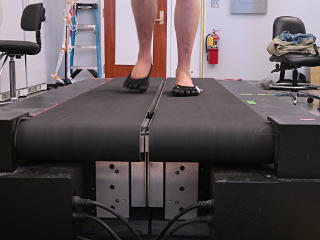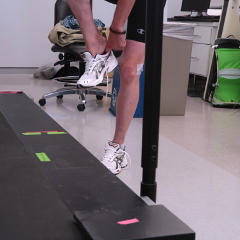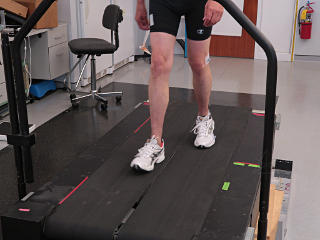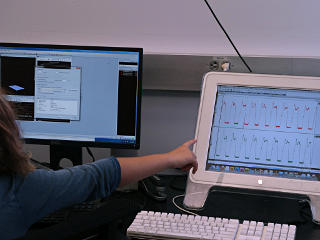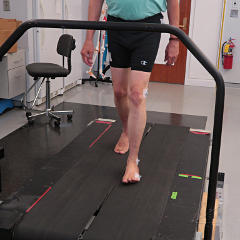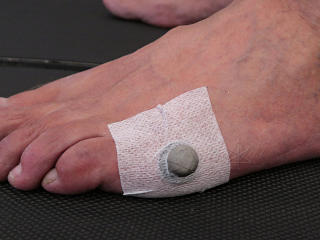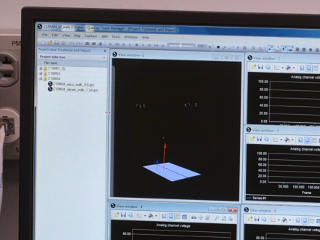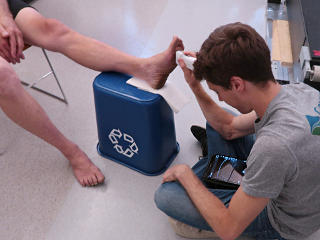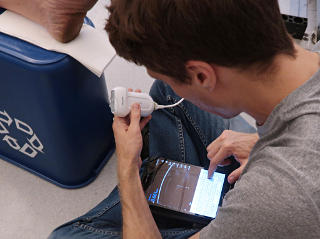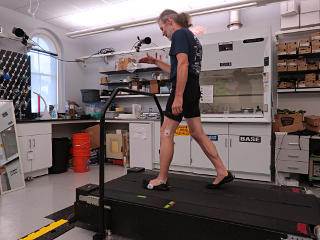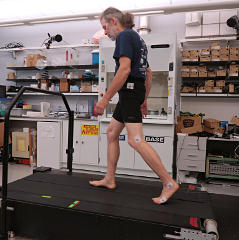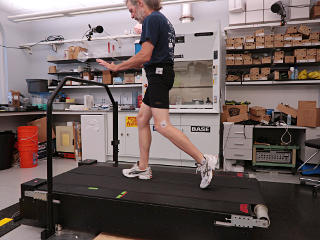| |
And that was it for me too; the lab folks made sure everything was saved,
and shut things down.
Nick and I had a little time to chat about some of my other observations
afterward.
One thing I wanted to touch on was some of the temporal dynamics of
running.
Not that I run very much myself, but the rare times I'm in a sort of
dog-trot on a rough surface I've definitely noticed a lot of interesting
processing going on.
The timeframe for compensating for terrain lengthens to multiple groups of
steps, in a really interesting way that also utilizes body inertia.
It's a little hard to describe, but paying more attention to what my
autonomous system is doing coupled with some video analysis could probably
help nail down more about what we could observe.
Our feet have a lot of true three-axis reaction force sensing built
in, and we use it best when we're barefoot.
At any gait and on any surface I feel a lot of subtle detail about the
propulsive, twisting, and frictional forces at work through my soles,
which is immediate and essential feedback.
I don't think we yet have an external instrumented equivalent with the
same kind of granularity, which can capture force vectors *within* the
area of a footfall.
In the absence of that, I suggested that while it's only qualitative data,
it may still be useful to have some in-depth chats and outdoor sessions
with routine barefooters who also love to analyze things.
The more I learn about musculoskeletal systems and what controls them,
the more fascinating the subject becomes.
It is simply mind-blowing that the same basic cell structures, present
in almost all creatures, can *repeatably* mutate to specialize into all
the components that make this stuff work pretty reliably.
|
